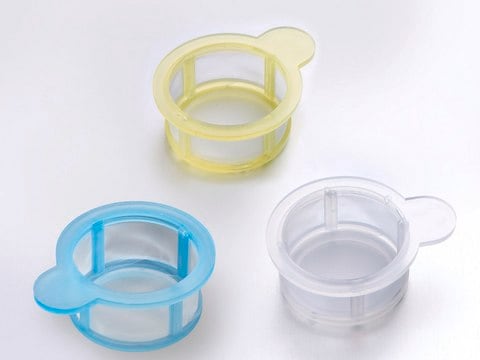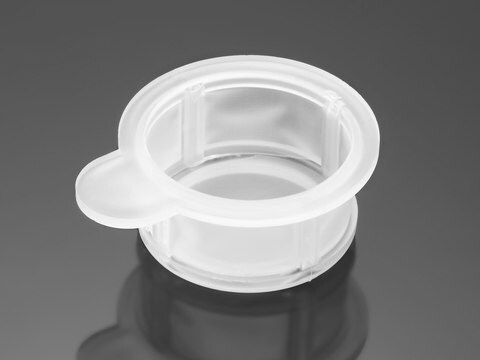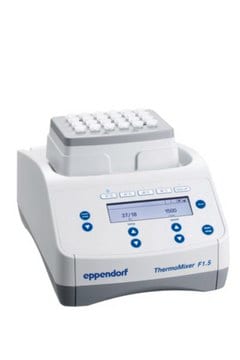D1947
Diffinity RapidTip®
for PCR Purification
Synonym(s):
PCR clean up tip, PCR purification tip, PCR reaction clean-up tip
Sign Into View Organizational & Contract Pricing
All Photos(1)
About This Item
Recommended Products
Quality Level
form
solid
manufacturer/tradename
(Diffinity Genomics, Inc.)
capacity
50(µL)
storage temp.
room temp
Looking for similar products? Visit Product Comparison Guide
General description
Diffinity RapidTip effectively removes dNTPs, primers and primer dimers while providing greater than 90% recovery of pure DNA fragments from 100 bp to 10 kb. The functional pipette tip contains everything you need for PCR purification. The tip is filled with a proprietary adsorption technology that has a differential affinity for PCR components. The dispensed solution yields purified, high quality DNA ready for downstream applications such as DNA sequencing, SNP analysis and microarray printing.
Application
Diffinity RapidTip® has been used in PCR product purification.
Features and Benefits
- Single step
- Recovers 90% of high quality dsDNA
- Optimized for 25 μL RXN
Legal Information
RapidTip is a registered trademark of Diffinity Genomics, Inc.
Certificates of Analysis (COA)
Search for Certificates of Analysis (COA) by entering the products Lot/Batch Number. Lot and Batch Numbers can be found on a product’s label following the words ‘Lot’ or ‘Batch’.
Already Own This Product?
Find documentation for the products that you have recently purchased in the Document Library.
Lisa A Santry et al.
Virus research, 175(1), 30-44 (2013-04-16)
Maedi-visna virus (MVV) and caprine arthritis encephalitis virus (CAEV) are related members of a group of small ruminant lentiviruses (SRLVs) that infect sheep and goats. SRLVs are endemic in many countries, including Canada. However, very little is known about the
C N Roterman et al.
Proceedings. Biological sciences, 280(1764), 20130718-20130718 (2013-06-21)
The phylogeny of the superfamily Chirostyloidea (Decapoda: Anomura) has been poorly understood owing to limited taxon sampling and discordance between different genes. We present a nine-gene dataset across 15 chirostyloids, including all known yeti crabs (Kiwaidae), to improve the resolution
Myron T La Duc et al.
Applied and environmental microbiology, 78(16), 5912-5922 (2012-06-26)
Spacecraft hardware and assembly cleanroom surfaces (233 m(2) in total) were sampled, total genomic DNA was extracted, hypervariable regions of the 16S rRNA gene (bacteria and archaea) and ribosomal internal transcribed spacer (ITS) region (fungi) were subjected to 454 tag-encoded
Marion L East et al.
International journal for parasitology. Parasites and wildlife, 2, 257-265 (2014-02-18)
We provide the first genetic sequence data for a Dipylidium species from a wild carnivore plus an analysis of the effects of ecological, demographic, physiological and behavioural factors on Dipylidium sp. infection prevalence in a social carnivore, the spotted hyaena
Jessamina E Blum et al.
mBio, 4(6), e00860-e00813 (2013-11-07)
We report that establishment and maintenance of the Drosophila melanogaster microbiome depend on ingestion of bacteria. Frequent transfer of flies to sterile food prevented establishment of the microbiome in newly emerged flies and reduced the predominant members, Acetobacter and Lactobacillus
Our team of scientists has experience in all areas of research including Life Science, Material Science, Chemical Synthesis, Chromatography, Analytical and many others.
Contact Technical Service









